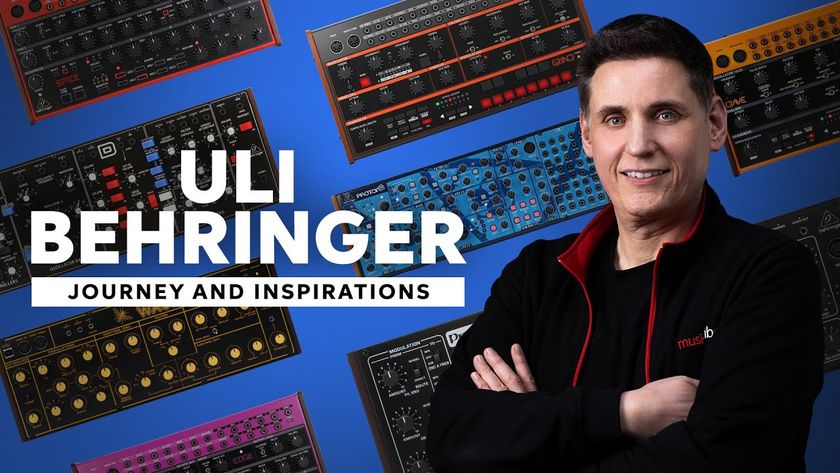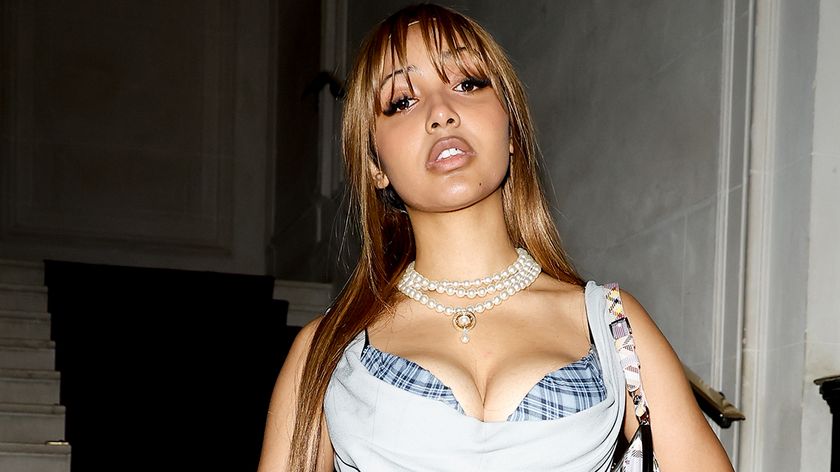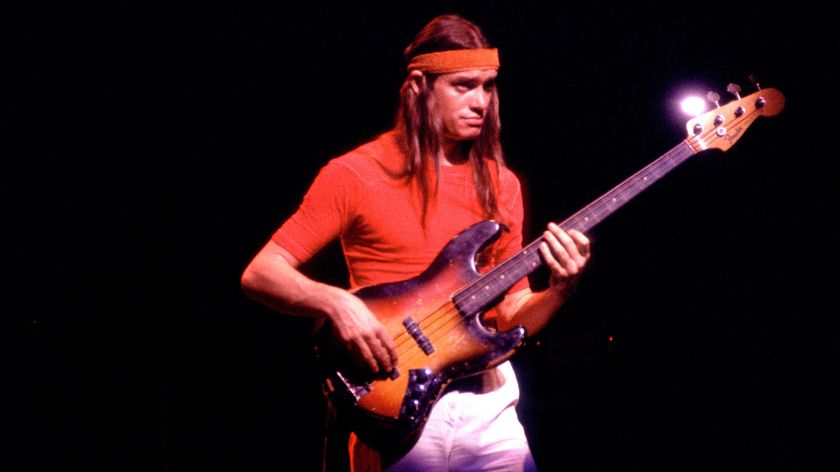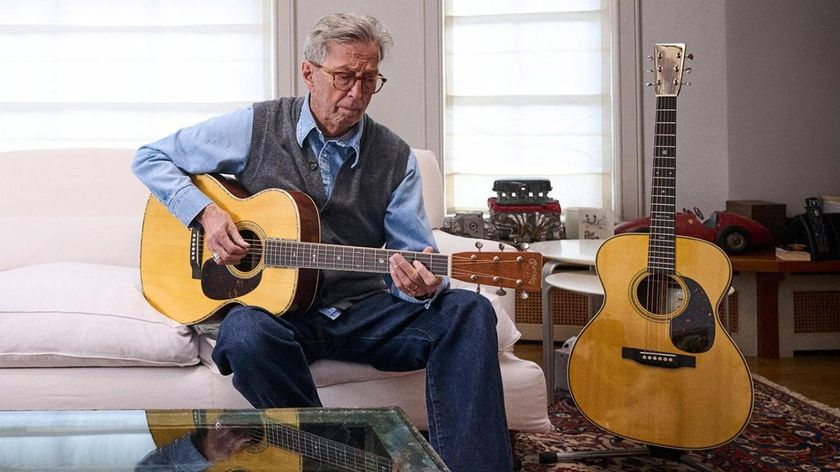Jenny Hval: "There are not all that many women in the mixing and mastering game - there’s such a lot of work to be done"
Jenny Hval’s latest album, Classic Objects, saw the Norwegian embracing – and coming to love – the ‘humdrum’ side of production in ways she’d never before explored
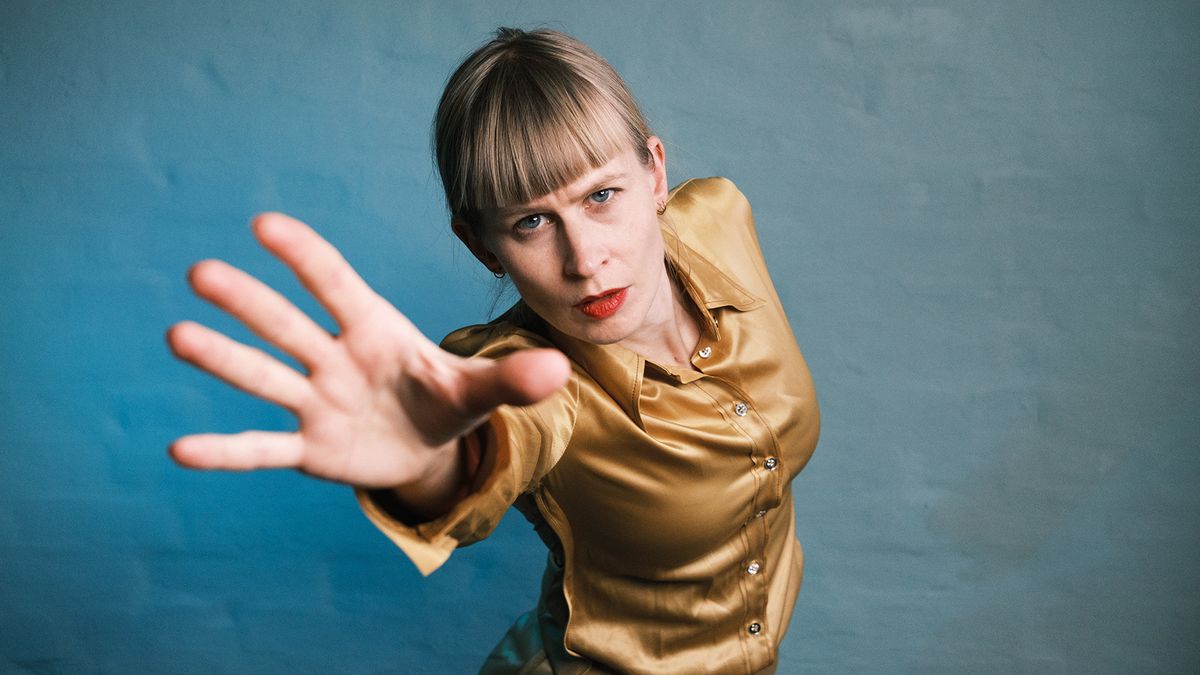
Rationalising a concept behind a piece of musical work can be both frustrating and a joy for experimental artists. Jenny Hval’s latest LP, Classic Objects, is more concerned with everyday life than perhaps previous albums like Blood Bitch with its vampires and – just as scary – musings on the female body.
Still, it can, the multidisciplinary artist admits, sometimes be nice just to get into a good old chat about mic positions. “I may be more of a lyricist than a lot of other people who work with music, but at the same time, the way I work with my setup actually informs the lyrics a lot. So it’s a conversation that can take up as much brain space creatively as the conversation that disregards the ‘technical stuff’. Because technical stuff is adventurous.”
And Hval’s work is nothing if not that. From her early noise and metal band beginnings, she’s moved deeper into the electronic world in her solo work, producing eight albums alongside an acclaimed 2021 side-project as Lost Girls, Menneskekollektivet. But her music has retained that initial love of all things dark and contrarian wit – even in its gentler moments, with a church-like organ or pleasant gospel interlude, you’re never far from something more discordant…
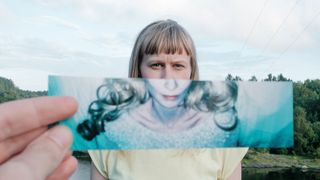
How did you kick off songwriting for Classic Objects?
“Some of the songs for this record started a few years ago – the title track and Jupiter started five or six years ago. They were originally started when I wrote Blood Bitch but I didn’t have lyrics. I think what I did was make demos in Logic. Sometimes those early Logic files end up on the albums as well, so it does define the albums a lot. For this one though I changed to using actual percussion and instruments. I often work on rhythms and go ‘hmm, I need a BPM’. I can often more easily find words when there’s a BPM and I can find a rhythm. It doesn’t have to be a straightforward rhythm but I find that I need a heartbeat for a character that speaks and I can bring to life. A synth or anything with pulse.
“Many times it’s a simple pulse, but for this album I started with contrasting percussion samples and from that came, maybe, singing on top, or keyboards as some kind of groundwork, and then things fall out of my mouth on top of that. That’s how I write a lot of the time. And I find that really fun and invigorating because when I start with something that isn’t chords I can invent some rhythmical genre that sits more abstractly for me than playing something I’ve done before. I cheat a little bit and I create a room for a character or voice to be in and that happened a lot on this album.
I spend 80% of my time during songwriting looking through sound libraries and finding sounds
“For the two songs that are really old I spent six years or so finding the words. Unlike when I’ve started with the music, these songs required me to find the right words from the rhythms. I couldn’t just use whatever. I spent a lot of time making different versions of those songs until it felt like they were right. It feels esoteric, but sometimes I do think there are hidden messages in the production side that haven’t quite emerged.
Get the MusicRadar Newsletter
Want all the hottest music and gear news, reviews, deals, features and more, direct to your inbox? Sign up here.
“It was worth it to wait for those songs. It also meant I had several versions of those songs [Jupiter and Classic Objects]. It was nice to have different visions. From that, I had these attempts at more percussive acoustic arrangements with tabla and stuff that I’d tried years ago, and it inspired my way of looking at building kits of different percussion on top of each other and building further arrangements from there.
“Some of the arrangements, like basslines, typically I do on synth. Whatever I have lying around. I think this time I had a synth that I decided at the last minute not to sell, so I played a lot of basslines and initial organ sounds on that. And then some singing. And further samples. I spend 80% of my time during songwriting looking through sound libraries and finding sounds. To find words or a character that I can sing or channel. A character who is obviously still me but speaks with this or that melody or intonation. Almost like finding the right reverb or room for a vocal.”
We know Practice of Love was framed around certain tempos… When you’re looking for these ‘characters’, do you think in terms of a particular musical palette – an era or historical set of sounds – or is it more anything goes?
“I did work a bit like that because at that time I was working with someone who was very into gear history – film music and synth eras. I had an Odyssey which defined Blood Bitch quite a bit. So in that case we went for certain instruments and then were inspired by lots of music using that instrument and taking a deep dive into that.
Because I’m not particularly good at one type of instrument, I can’t just base compositions on sitting down at the piano or guitar
“For this album I worked on my own and went specifically for ’90s arpeggiated synth. Sometimes from sound libraries, sometimes from a Virus synth which I now really hate as it just doesn’t work. The system is broken. I hate it; it makes me so angry. I used it onstage. It just misbehaved in so many ways that I’ve not experienced before. It’s like the whole company gave up. But that was a specific era and I’m not necessarily a fan of it. It’s not my go-to world but it was fun using these layers of arpeggiated synths for a while. But what I took from that into this project was looking for layering of other types of rhythm and percussion.
“The reason I do this, I think, is because I’m not particularly good at one type of instrument so I can’t just base compositions on sitting down at the piano or guitar. I’m very slow and I need to build on layers. It’s more fun and surprising to use my intuition and be kind of shameless in my approach to bring in, for example, a type of conga, and then bring it together with something else and… And maybe this character is sea-sick, for example. I’m basically telling you I’m very lazy!”
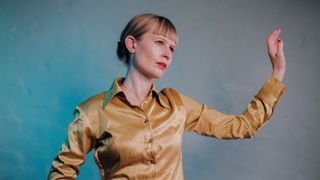
Clearly not! Being an experimental artist, do you keep a cache of previously discarded sounds that you can look back on and resurrect?
“In the beginning of working with projects I’d assemble sounds, but I always try to write with them because I want to figure out who am I with this instrument, like I can’t just gather things in a dry library and say ‘oh, that’s cool, that’s cool’, because that’s not how I connect with things.
“I need to figure out what I can do with this and have some kind of idea of where to place it in my writing. Then I can go back to it, and maybe change that idea and collection of sounds as well. But I can’t just have, like ‘Jenny’s Library of Cool-sounding Drums’. That’s not how I do things. I need to connect, so I have hours and hours of attempts at creating combinations of things. But there’s never really a track with one element and one sample that’s like an idea in itself.”
I have been in studio situations before, early on in my career, where I felt like the minute I walked into the studio I was just trying to be nice and agreeing with everyone
Do you ever have adventures in found sound? We know you’ve often previously featured snippets of conversation from here and there on your records…
“Rarely, actually. It’s more part of a composition for me. Before this album I remember being in a weird parking lot with these crazy slapback echoes and I started recording rather than going where I was supposed to be going to.
“I really wanted to use it but there were too many interfering sounds so it didn’t end up coming all the way into the album’s world. But I will sometimes have recordings, say, on my phone and they sit there and really want to be used and I can’t stop thinking about them. I listen to them constantly.
“I also have another song that is based around walking into Carlsbad Caverns New Mexico with lots of bats… I mean, it sounds like I was in a real adventure but it was a tourist walk that anyone can go on. I’m not Werner Herzog! It’s more like when something occasionally sounds magical and I’ll try to record it.
“I wish I did it more because I’m sure that it’s nicer not to plan so much. I’m a bit like that with photos as well. I should have more good, in the moment, photos with my dog, but I always take too long. It’s like, should I do it? I mean she looks so nice and happy! And then she moves.”
Given how personal your work is, how do you find collaborating with people and that side of production? Do you find that there’s a compromise in yourself or is it something that you enjoy?
“After being in lockdown so many times over the course of a year I did want people in a room. I do think that I always imagined this album being recorded in a studio with other people with all the compromises that will bring. This time I didn’t see it as compromise, I felt quite good about it.
“I have been in studio situations before, early on in my career, where I felt like the minute I walked into the studio I was mainly trying to be nice and agreeing with everyone. I can be like that. Not telling anyone what I want. But this time I felt like, well, I already had the arrangements and I felt very comfortable with bringing in these amazing people and saying ‘you’re going to play what is on the track already’. Then obviously there was experimentation around that, but it was on a detailed level.
“I felt like I’d be quite comfortable with having amazing people who I could tell to improvise, and it might sound amazing, but it might not sound right for the song. What made me feel so comfortable with doing this is that I always feel quite lonely in the lyrical department so my songs are very much arranged around the lyrics.
If I can hear myself in a way that doesn’t make me sound like a sea-monster via a telephone, it’s my happy place
“I’ve written the lyrics very specifically to, say, the beats of a track and when that is taken away sometimes that, to me, sounds compromised. The life is gone and there’s a different living being that doesn’t fit anymore with the song or the idea of the character. The performance isn’t the performance anymore.
“This time I felt like that approach was kind of needed – with a few exceptions on the album, mainly the last track which we redid and I think it still works – the arrangements stayed true to the way I wrote them. They were expanded on and instruments were added I haven’t played myself but it stayed true to to the voice and I felt that made it into something that, for me, actually sounded more communal than if everyone just played whenever they wanted. Because that can be a horrible quest.
“Many times previously I’ve believed that if you ask people to do whatever they want that’s more liberating and more challenging and the music will be better – but it’s often the opposite, people get insecure. I love performing tasks and exercises and sometimes I learn much more than that from ‘just do your thing’.
“It’s difficult because when I’m doing my own thing, I’m in my own space. I’m creating my own music all alone, that’s my thing, so when someone tells me to throw in some improvisation on top of the stuff that we’ve already made, that becomes a very strange process for me.”
This brings us into the question of mixing and ‘handing over your baby’. We noticed that you worked with Heba Kadry. What was that dynamic like?
“I had worked with her before for mastering and that was an amazing experience, and then I heard she was mixing and I just felt that would be a really interesting way to work. At that time we’d also been working so much already. I’m sure that Kyrre, who’d produced with me, is also very, very good at mixing, but I felt like we needed some distance.
There are not all that many women in the mixing and mastering game - there’s such a lot of work to be done
“I also felt like I really wanted to work with Heba. I know that there are not all that many women in the mixing and mastering game and there’s such a lot of work there to be done. The music industry is really a terrible place for intersectional stuff. I was thinking about that, but mostly I was thinking about her as a person because I’m also very interested in someone who does both. I think that made the mixing much more interesting.
“I was recording vocals for so long after we finished in the studio. I’m not very good at recording vocals in a studio, so I did that at home in 8-minute intervals between the subway going right next to me and the puppy barking. So that was interesting. The room was quite unsuitable, I guess, but Heba did a lot to make it work, in terms of fixing the space, which took a really long time. She gives like 300%. It was kinda almost frightening.
“She kept mixing into the mastering process, and things were becoming really amazing. She just kept going in between [mixing and mastering} and that is something that I find incredibly valuable. To be able to take a step back while you’re mastering as well. It’s just incredible what you can do when you open that can of worms. It really helps the finished results become great, as, obviously, during the mastering details can come up, like, say with reverb that’s more audible, and she can fix that. So yeah, that’s something I’m grateful for.”
Do you have any desire to throw yourself into parts of the process you haven’t explored yet?
I am now so severely interested in EQing
“Because it took a long time to make this album and a really long time to mix it – the mixing and mastering over several months – it allowed time for all these amazing discussions and I am now so severely interested in EQing. [laughs] The circumstances allowed me to work with Heba on it. I mean, obviously nobody could go to America and the fact that we couldn’t be in the room with her meant I had to constantly try this and that.
“If we’d been there, a lot of stuff would have taken two minutes. Instead it was two days of me saying like, ‘oh sorry, I meant that to be the other way around’. Obviously sometimes embarrassingly. But the fact that I had longer to think around things meant I was super interested in getting details right, especially getting vocals right.
“Obviously I’m not trained but I practise singing and writing in the same instant very much and I did become a vocal nerd in many ways with this album because I had time. Especially in the mixing, because I think a lot of vocal mixing is based on the upper mid-range being quite spiky, which I’ve just realised I don’t want and I think doesn’t fit my particular voice. So things like that I’ve become very aware of.“
Is it true that you considered this your “pop album”?
“Yes, it was kind of conscious. I didn’t want to work so much with a script with, say, harsh stops and breaks, like where you get 10 songs to put on your computer and then switch between things like a DJ. That’s what I’ve done on some of my previous albums and it’s fun but I can’t keep doing that.
I was interested lyrically in making things a little bit simpler, a little bit more direct
“For Blood Bitch that approach was very integral to the songs. For this album, it was important, to me, to go in another direction and then allow more space for each song to develop naturally. It is natural to be a DJ and just chop things off, but it didn’t feel like it was right for this music. So that’s why some of these songs I wrote six years ago didn’t make the Blood Bitch album because they didn’t fit that ethos.
“I was interested lyrically in making things a little bit simpler, a little bit more direct, it felt like the personality was there in the singing rather than in the production. I wanted to transfer that complexity into lyrics and into the performance of them. I think I could have spent the time on things like transitions between songs to make it more seamless, like a film soundtrack.
“Instead I spent more time just re-recording and re-recording vocals to make the focus the transitions between, say, different phrases or words. So everything I’ve done before that sounds quite different is still here but it’s just I’m now interested in working them into different areas. So that, I think, makes it more of a pop record. Because pop is more interested in letting songs be.”
Hard to know what pop is, sometimes…
“True! I guess it’s about trying to find melodies and not stop because it sounds poppy. Sometimes I have done that in the past. Broken off a melody that maybe would have gone interesting places if I hadn’t stopped it.”
What have been the standout pieces of studio equipment you’ve had in your career? Do you have those attachments?
“With me it’s always been mics. I got deeply into the Odyssey for Blood Bitch but I never understood it. It was all random. And after I stepped away I lost it all again. I had it then lost it. I forget very easily with instruments. But with mics I’m very interested. I’ve realised that until a certain point I always had the wrong one. I feel like before this one mic – an old Sennheiser 845 – I wouldn’t even consider producing music.
I’m very much in connection with my mics. If it’s not right I have a terrible time when I perform
“I felt like with this and my little Zoom 3-track recorder at the time and the built in effects (I have a long-standing relationship with the delay), I realised I could do this. And I’ve never really enjoyed singing without mics. On Apocalypse Girl I worked with two mics, one was a Placid Audio Copperphone (a tip from an engineer) which is cheap and has a great effect that’s fun to have while recording.
“I really want the right sound when I do vocals because I write when I do vocals and if I have the wrong frequencies I’ll sing terribly. In past albums I’ve really struggled. I bought this very good but at the time affordable 67 copy, a Wunder CM67 mic, and I realised this was the best mic and I’ve used it for years. And this album I realised that results do have something to do with the mic.
“I also have a Gefell mic that I’ve used for years, not a fancy tube one, but anyway, I usually have it in front of me and it’s very easy for me to sing into this mic. It fits my frequency range, whereas this tube mic I’ve used makes me off-pitch all the time and imprecise.”
Do you feel a bit twitchy if you have the wrong setup?
“We ended up rerecording the last track because I went to visit an old acquaintance of mine who also has loads of mics and became enamoured with them. But yes, I’m very much in connection with my mics. If it’s not right I have a terrible time when I perform.
“But on the other hand, I’m the type of person who’ll say, let’s just finish the soundcheck, even if things aren’t perfect. So I can still perform but if I can hear myself in a way that doesn’t make me sound like a sea-monster via a telephone, it’s my happy place.”
You’ve done some quite cool shows. Anything different planned for these next tours?
“It’s going to be very different. I played my first one last Friday. I had a mic on a stand. A monitor. And I took a chair from backstage. And that was it. So that’s my elaborate setup! And for many years I had vocal effects and guitar pedals and a converter but I got very sick of that – because I want to look at the audience – which is why I changed to not doing anything. With Lost Girls I play a synth and have a computer but it’s just for the setlist and to see what tweaks I’m doing on the synth. And a Minilogue because it’s easy to bring.”
So it’s about not putting a wall up?
“I’ve had elaborate props – like a tent – but apart from that – oh and some silicone hands on sticks, and gloves, performing on synths, and make believe synths. And props because I’m interested in the rhythm of writing and showing that on stage. But after all that [laughs], and dealing with venues and fire safety, it’s a lot. In the music sector – unlike performing arts – you’re not going to have a lot of the time, and you’ll be compromised. This time I just want to have fun. And not have 90 emails about a tent. We’ll see what happens.”
Classic Objects is out now on 4AD, and Jenny Hval is on tour.



"Reggae is more freeform than the blues. But more important, reggae is for everyone": Bob Marley and the Wailers' Catch a Fire, track-by-track
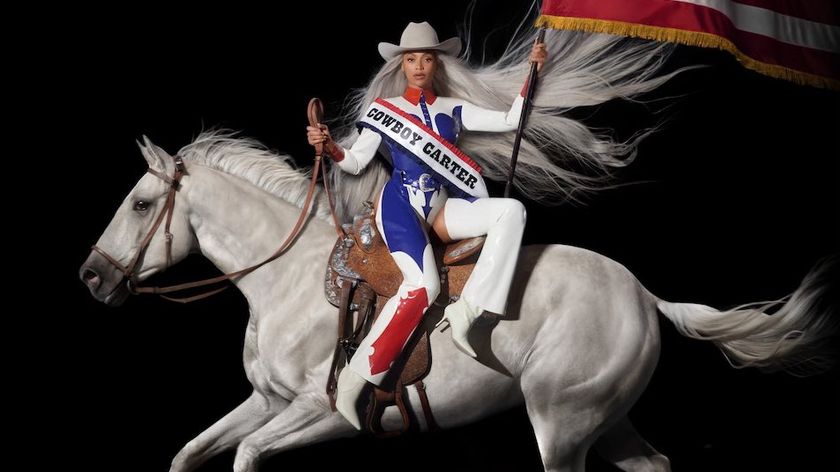
“Part of a beautiful American tradition”: A music theory expert explains the country roots of Beyoncé’s Texas Hold ‘Em, and why it also owes a debt to the blues
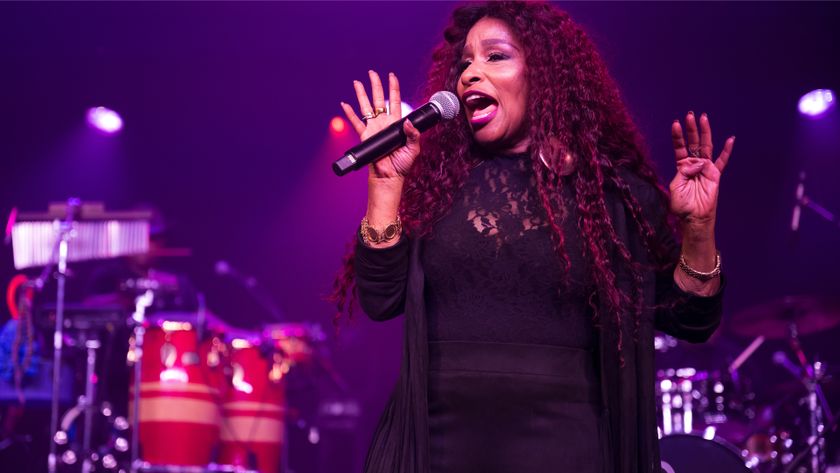
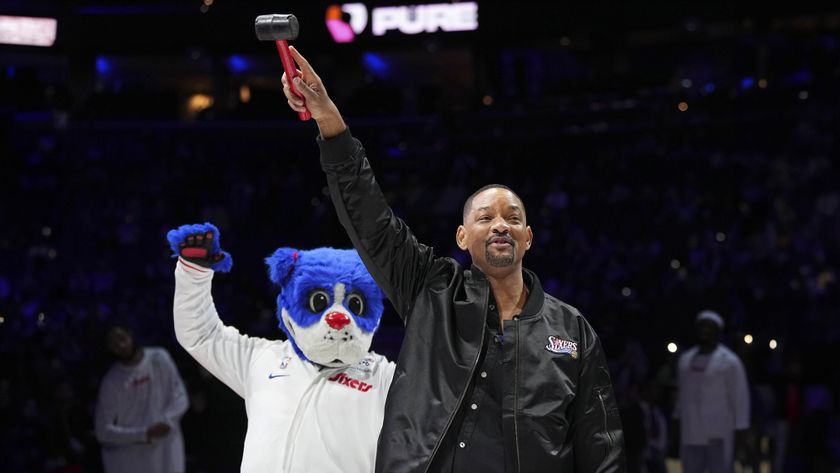


![Chris Hayes [left] wears a purple checked shirt and plays his 1957 Stratocaster in the studio; Michael J. Fox tears it up onstage as Marty McFly in the 1985 blockbuster Back To The Future.](https://cdn.mos.cms.futurecdn.net/nWZUSbFAwA6EqQdruLmXXh-840-80.jpg)

